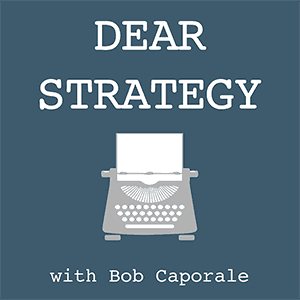Dear Strategy:
“How do you align your product strategy to the broader corporate strategy?” (Continued)
Last week, I gave you the first part of my answer to this question, which was all about communicating (or inquiring about) the company strategy from the top down. That’s the first part of alignment – making sure that everyone knows what the company strategy is.
Now that you know what your company strategy is, you should have something to align your product strategy to. But here’s the hard part: making sure that you even have a product strategy in the first place. And the only reason you wouldn’t have a product strategy is because of that pesky little thing we call “time.”
Time is the one thing that every product manager has too little of – or at least that’s the way it may appear on the surface.
The problem with product management positions in most larger organizations is that they become “catch-alls” for everything having to do with a product. And, let’s face it, most product-related tasks are going to involve getting more sales and finding more opportunities. Companies need money to survive. That means the short-term gain is almost always going to take precedence over the long-term plan. No – I do not agree with this dynamic. But it does happen to be the reality that most product managers face on a day-to-day basis.
As product managers, we can hardy fault our companies for this little dilemma. After all, we are the ones who are responsible for prioritizing our own work. And if we continue to support mostly short-term issues, then we are inadvertently conditioning the organization to believe that this is, in effect, what the balance of our jobs should consist of.
So, we have to make time for the plan. I end every podcast with that phrase, but it’s only because I feel so strongly that we need more of that kind of thinking. And yes, as product managers, we have to take it upon ourselves to develop our product strategies, regardless of whether or not our companies require them of us.
But you don’t have time, you say? Then put time on your calendar. Lay aside at least 4 hours a week to work on your plan. Schedule that time with your product team, and make it an integral part of your day-to-day focus. And, above all, make it mandatory. Even if your company has a formal annual strategic planning process, spreading out your effort throughout the year will only make the task that much more tenable. And that’s really what the strategic process should be – an update of what you’ve already been doing, not a crunch session designed solely to please your executive staff.
Once you have a strategy that’s in motion, you need to communicate it at every turn so that your company and your product strategies can remain fully aligned. Make sure that everyone who has a part in executing your plan knows exactly what your plan is and exactly what role they should play. This one’s on you – and you just need to make time to do it.
So, taking both parts of the answer together, the keys to achieving alignment are: 1) to develop both a company and a product strategy, and; 2) to communicate those strategies up, down, and throughout the organization.
There’s really no secret to it. It’s really just about having the discipline… and making the time.
Listen to the podcast episode
Dear Strategy: Episode 028

###
Bob Caporale is the author of Creative Strategy Generation and the host of the Dear Strategy podcast. You can learn more about his work by visiting bobcaporale.com.




